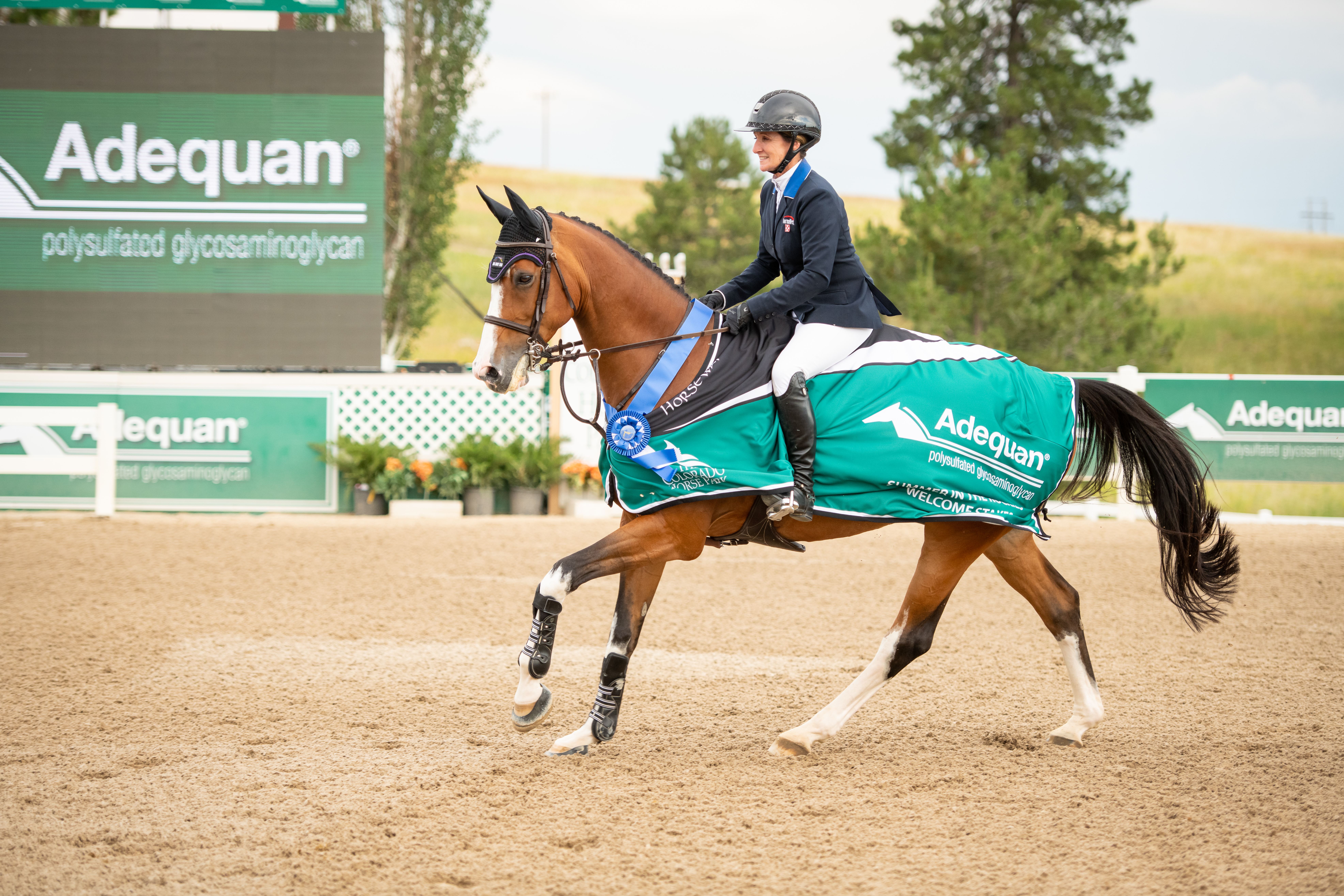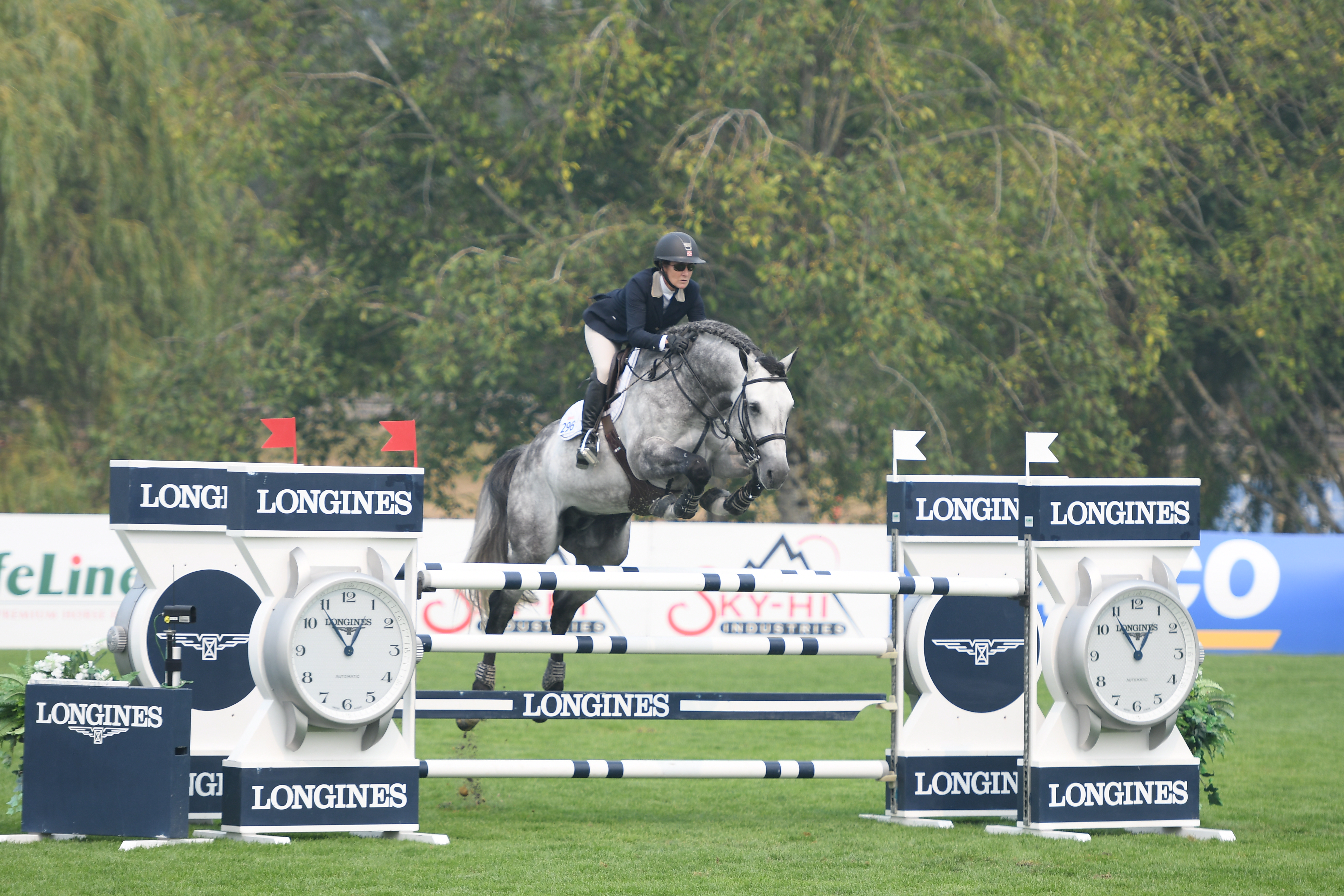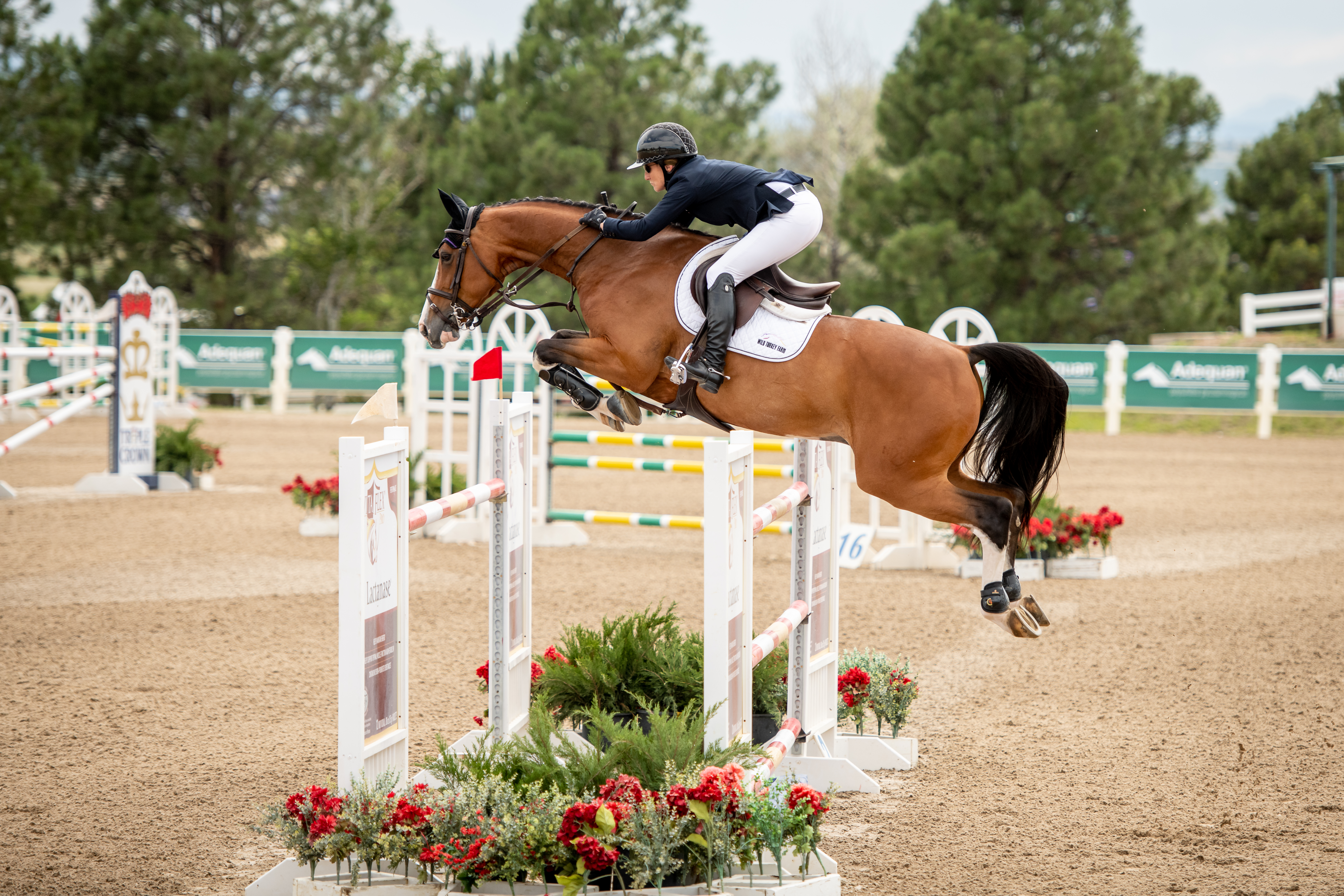
Learning to Ride Any Type of Horse with Mandy Porter – Part 2
Blog
Learning to Ride Any Type of Horse with Mandy Porter – Part 2
In the first article, we asked show jumping professional Mandy Porter about learning to ride any type of horse. We learned about starting with an initial evaluation and using groundwork to build trust. Now, it’s time to move onto saddle work.

Mandy Porter and WT Ca-Pow! Photos by White Fence Equine Photography
Many riders start with a young horse and want to take that horse up through the levels or grow together as a team. “Young horses are like a piece of clay that you get to mold into how you like them,” Mandy explains. “Horses that come with experience sometimes need to be rebuilt. Using a fresh piece of clay can be easier than dealing with something from their past.”
One of the most rewarding parts about training horses for Mandy is working with young horses early in their career, and building them up, and bringing out their ultimate potential. Leapfrog is an example of a horse that Mandy took up through the ranks to reach his full potential. She was able to work with him early in his career and through the Grand Prix level.
“I’ve had a few horses that I’ve done this with. Additionally, it can also be satisfying if they are sold and able to watch them be successful with their new riders,” she says.
Flat Work and Jumping Practice
Mandy likes to keep training sessions interesting for her horses both on the flat and while jumping. She mixes jumping and flatwork by adding little jumping exercises into the flatwork. “My horses like to jump, it’s not something we make them do. Our role can often be to help them improve with technique.”
Flatwork is used to teach the horses to be supple, breathe correctly, and use their body correctly to have good balance. Mandy likes to put them in a situation where they learn to balance rather than forcing them. For example, she’ll do small circles with big horses to teach them to balance themselves rather than holding them into a frame.
One important thing for all equestrians to learn is to know when you can push your horse, but not overdo it. Recognizing when the horse is getting it and not overworking them is key. That point when it reaches “overworking the horse” depends on their mental and physical abilities.
A fit horse is a sounder horse, and older horses need to be kept really fit. Mandy often mixes little jumps into the flatwork for her older horses to keep the work interesting. She doesn’t jump her horses a lot. It depends on their level of training, but again, she’s cognizant not to over jump them. Working on the trail is also a beneficial tool that keeps fitness work more interesting.
Keeping horses jumping fit depends on how often they’re showing. A horse coming off a break may need to jump more, whereas one that is regularly showing may be jumping less. Tailoring the training plan for the horse’s temperament, ability and show schedule helps them reach their full potential.
Wake up the Quiet Horses
“If a horse is quiet and relaxed, even lazy, you have to find something to interest them and wake them up a bit,” Mandy says. “We’ll go out on the trail, maybe in a group if that’s what the horse needs, or go somewhere that’s more open and put the horse in a bigger space. Here, you can teach them to go forward.”
In a bigger space the horse can gallop and open up; this helps them come into their step more. Some horses may feel confined in an arena, which may be beneficial for some horses, including the sensitive ones. But horses with other temperaments, those that are quieter or maybe a little lazy may need a different environment to wake them up, and an open field, trail, or larger arena often works.

Mandy Porter and WT Leapfrog. Photos by Totem Photographics
Help them be Their Best
Every equestrian will face challenges at some point in their career. Sometimes a horse has a lot of potential, but for some reason, it can’t get the last piece of the puzzle. In some instances, a horse will have the physical ability but the mental fortitude to compete at higher levels isn’t there.
Mandy recommends that riders who find themselves in this situation reassess and figure out what the horse will be best at. Determining the horse’s comfort level and strengths can turn a frustrating situation into a rewarding one. Here you can reflect back to a place where the horse was confident and happy in its training, return to groundwork to keep building trust, and then make a new plan.
“You have to let horses express themselves,” she adds. “Figure out what the horse needs and how to help them excel and be their best.” Mandy’s approach to training horses emphasizes horsemanship. She loves the horses and isn’t afraid to do the work. “The whole reason we ride and train is because of the horses. At the end of the day, I just love the animals.

Mandy Porter and WT Ca-Pow! Photos by White Fence Equine Photography
Her takeaway piece of advice for other equestrians is to continually learn. “I am learning every day from all aspects of the business; for example, different disciplines and how they train their horses. It’s important to remain very open-minded and to continuously keep learning how to do a better job.”
Make sure you didn’t miss the first part of the series where Mandy talks about Learning to Ride Any Type of Horse
